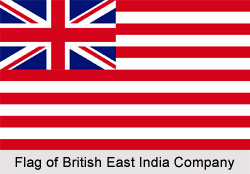 Since the period of early 17th century, an old English East India Company existed, following its duties in India and to the crown back in England. It was making decent business, in spite of the existence of the Dutch East India Company and French East India Company. However, with the ascension of William III and Mary to the British throne in the late 17 century, things turned sour. William issued a setting up of a separate British East India Company, just to vie with the old one. Needless to speak, the new plan was hugely and grossly unsuccessful, it ran into severe losses. Cold feelings of hostility ran throughout the minds of the old and the new Companies. As a result, under Royal consent, a request was made to amalgamate the two East India Companies.
Since the period of early 17th century, an old English East India Company existed, following its duties in India and to the crown back in England. It was making decent business, in spite of the existence of the Dutch East India Company and French East India Company. However, with the ascension of William III and Mary to the British throne in the late 17 century, things turned sour. William issued a setting up of a separate British East India Company, just to vie with the old one. Needless to speak, the new plan was hugely and grossly unsuccessful, it ran into severe losses. Cold feelings of hostility ran throughout the minds of the old and the new Companies. As a result, under Royal consent, a request was made to amalgamate the two East India Companies.
Eventually, on 22nd July 1702, the two East India companies amalgamated under the name of the United Company of Merchants trading to the East Indies. Execution of the amalgamation of the two Companies began under the supervision of a body of managers representing each company. Over the next six years each company focused on clearing its debt and completing its previous stock issues.
The newly amalgamated company embraced a new organisation, including:
• A Court of Proprietors consisting of owners holding at least 500 pounds of Company stock.
• A Court of Directors numbering twenty-four, each possessing a minimum of 2000 pounds in stock. From this body a Chairman and Deputy-Chairman were to be chosen annually.
• A structure of nine committees drawn from the Court of Directors to conduct the day-to-day work encompassing: Correspondence, Law Suits, Treasury, Warehouse, Accounts, Buying, House, Shipping, and Private Trade.
• The Company was required to call the General Court into session for meetings each March, June, September and December.
On 20th March 1708, the Parliament passed an Act appointing the Earl of Godolphin (1645-1712) to settle the remaining issues. His final awards were made on September 29, 1708 and the union of the companies was finalised in May 7th 1709. The Act also called upon the new united company to loan 1,200,000 pounds to the British Government without interest.
In the year 1718, the Parliament passed an Act which made British citizens, employed in a foreign country and engaged in trade with India, subject to a 500 pounds fine. By this means, the British East India Company sought to insure its monopoly and to fight off Interlopers. Additional Acts were passed in 1721 and 1723 to stiffen the penalties.
From the year of 1719 onward, the English East India Company faced the growing political and economic challenge of the French East India Company. Founded in 1690, the French colony at Chandannagar, upstream from Calcutta, grew in commercial importance. In 1742, Marquis Joseph Francois Dupleix (1697-1763) moved the French governorship from Chandannagar to Pondicherry in south India.
In the year 1726, the Charter granted by George I (1660-1727) modified the investment of legislative powers. The modifications were made by transferring them from the Directors of the Company to the Governors or Presidents and Councils of Madras, Bombay and Calcutta. However, any new legislation required the approval and confirmation of the Company`s Court of Directors. This charter also provided for the establishment of a Mayor`s Court in each Presidency city.
In 1730, the merchants and traders of London, Bristol and Liverpool presented petitions to the House of Commons. In opposition to the monopoly of the East India Company, they sought free trade with India. The Parliament renewed the Charter Act until 1766 on terms which reduced Company`s loan from five to four per cent. The Charter also allowed for the Company`s contribution of 200,000 pounds to the British Government.



















